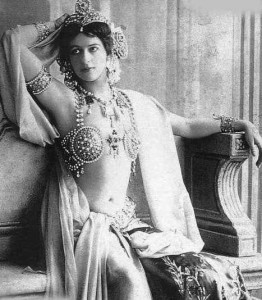07.25
The blog is back after taking a few days to visit the Baseball Hall of Fame in Cooperstown to witness the induction of my boyhood hero Ron Santo. (The blog maybe hit or miss for a while, as I am still on vacation).
On this date in 1853, notorious California bandit Joaquin Murrieta’s head is placed on exhibit in the Northern Californian town of Stockton. Murrieta, who was known as the “Terror of the Stanislaus,” had been disrupting the burgeoning gold trade and intimidating the public, along with his gang of thieves. The first celebrity outlaw in the new state of California, various legends sprung up about Murrieta’s life. On May 17, 1853, the state of California placed a $5,000 bounty upon Murrieta and authorized Harry Love to lead a team of 20 rangers to bring him in, dead or alive. This elite law enforcement team caught up with a man they presumed to be Murrieta a month later near the Tejon Pass, killed him, and brought his head back to display to the relieved public (There was, and remains, some dispute over his identity). Murrieta’s henchman, Three-Fingered Jack, was also killed; his telltale hand was cut off and exhibited for public viewing.
The Life and Adventures of Joaquin Murrieta: The Celebrated California Bandit by John Rollin Ridge, gave rise to much of Murrieta’s legend. According to this unsubstantiated story, he had come to the Stanislaus River near San Francisco to prospect for gold during the great gold rush. However, Murrieta’s Mexican heritage caused him to be beaten and severely whipped, his wife raped, and his brother-in-law killed in an unprovoked attack by racist Americans working their own claims. Vowing revenge, Murrieta formed a gang of Mexicans who roamed the frontier towns and terrorized prospectors and new communities. Ridge’s book was so successful that it inspired several copycat works. Murrieta was characterized as a Robin-hood type figure, a Mexican rebel leader, or a vicious outlaw, depending on the author’s perspective. In the 1997 film Mask of Zorro, Murrieta appears as Zorro’s brother. In Isabel Allende’s Daughter of Fortune, he is a Chilean hero. Stories about Murrieta have continued to this day.
On this date in 1917, Mata Hari is sentenced to death by a French court for spying on Germany’s behalf during World War I. Since 1903, Margueretha Gertruida Zelle, born in a small town in northern Holland and formerly married to a captain in the Dutch army, had performed in Paris as a dancer. She adopted the stage persona of Mata Hari, claiming she was born in a sacred Indian temple and taught ancient Indian dances by a priestess who gave her the name, which meant “eye of the dawn.” Her exotic dances soon earned her fans all over Europe, where she packed dance halls from Moscow to Berlin to Madrid, largely because of her willingness to dance almost entirely naked in public. Mata Hari also became a celebrated courtesan, and by the outbreak of World War I, her catalog of lovers included high-ranking military officers and political figures from both France and Germany. The circumstances of her alleged spying activities during the war were and remain unclear: it was said that, while in the Netherlands in 1916, she was offered cash by a German consul to report back information obtained on her next visit to France. It appears that British intelligence discovered details of this arrangement and passed them on to their counterparts in France. In any case, Mata Hari was arrested in Paris in February 1917.
Under interrogation by French military intelligence, Mata Hari herself admitted that she had passed outdated information to a German intelligence officer, yet she claimed that she had also been paid to act as a French spy in Belgium (then occupied by the Germans), though she had not informed the French of her prior dealings with the German consul. She was apparently acting as a double agent, though the Germans had apparently written her off as an ineffective agent whose activities had produced little intelligence of value. Mata Hari was tried in a military court and sentenced, on July 25, 1917, to execution by firing squad. As the Times of London reported on October 15, 1917, the day of her execution, “She was in the habit of meeting notorious German spy-masters outside French territory, and she was proved to have communicated important information to them, in return for which she had received several large sums of money since May 1916.” Her trial was riddled with bias and circumstantial evidence, however, and many believed the French authorities, as well as the press, trumped her up as “the greatest woman spy of the century” as a distraction for the huge losses the French army was suffering on the Western Front. Viewed by many as a victim due to her career as a dancer and courtesan and the French need to find a scapegoat, Mata Hari remains one of the most glamorous figures to come out of the shadowy world of espionage, and the archetype of the female spy.













